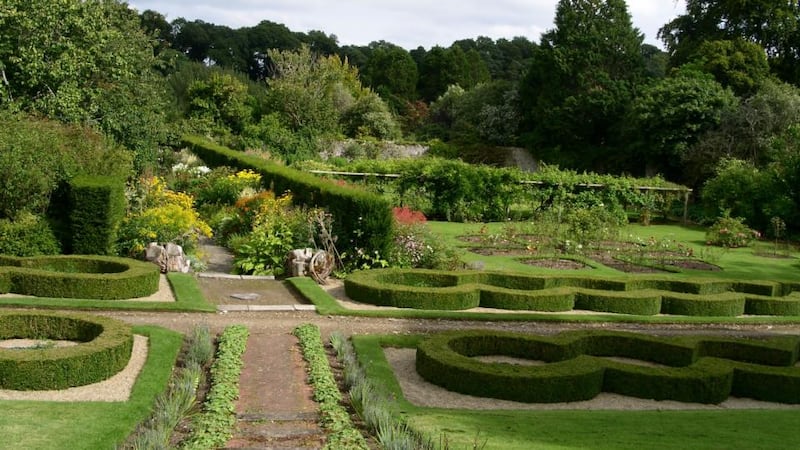The legend that a pot of gold guarded by fairies and therefore inaccessible lies under one of the trees at Annes Grove may be no more than a legend, but at last a little gleam of gold is shining on this famous garden, closed to the public since 2013.
In January this year Simon Harris, the then minister of state at the Office of Public Works (OPW), welcomed the handing over of the keys to the 190-acre Annes Grove demesne to the OPW by Patrick Annesley. With his wife, Jane, Patrick has been managing the care of the gardens at Castletownroche in north Cork for many years. (Jane is also primarily responsible for the annual Elizabeth Bowen memorial service at St Colman's Church, Farahy, outside the gates of vanished Bowen's Court.)
It was as long ago as 2005 that in order to guarantee the future of Annes Grove the Annesley family decided to offer the gardens, house and demesne as a gift to the State or to a state-sponsored body. “We were pleased and relieved when, after a process which proved unexpectedly complex and protracted, this donation was finally accomplished in the dying days of 2015,” says Patrick Annesley. “The OPW now has a highly professional team on site and we are glad that the restoration of the important gardens will be a priority.”

The Grove Annesleys have been at Castletownroche since 1628 and the handover includes the lovely old house, built in the early 18th century. The house has been weatherproofed and made structurally secure to await its turn and the phased work is also continuing on the immediate surroundings and approach avenues. But it is the gardens which, as OPW spokesman Eugene Keane says, “are the glory of Annes Grove”.
Long celebrated among the gardening elite and recorded in the pages of Country Life and other arbiters of horticultural taste, they lie on a plateau above the river Awbeg. The poet Spenser lived some miles away at Kilcolman and his poetry contains references to this landscape of woodland, river and glen. Crucially, the location allowed the development of the Robinsonian style of landscaping at Annes Grove so that today its lawns, borders and rhododendron avenues are an informal contrast to the dramatic sweep down the cliff to the riverside.
The ornamental gate lodge to the northwest of the estate was designed by Benjamin Woodward in 1854 (and is now managed by the Irish Landmark Trust). Most of the land is in the home farm demesne and surrounding woods.
Dramatic descent
The charm and comforts of the cottage garden combine surprisingly well with the dramatic descent into the gorge, where the tumbling river is often hidden from view amid outbursts of planting, all outshone in summer by the spectacular Primula Florindae which foams in a yellow lake along the banks.
That primula alone indicates the status of Annes Grove. Developed gradually as an ideal domestic garden, it was not until it was inherited by Richard Grove Annesley that it achieved national importance. Richard and his wife, Hilda, married in 1907 and began to create a series of related areas. Richard also borrowed a battalion of soldiers from the barracks at Fermoy to re-channel part of the river and to build bridges and weirs along its stream.
He also became an enthusiastic plant-hunter: although he did not actually hunt himself, he subscribed, as did the owners of several other important Cork gardens, to the expeditions in the Himalayas of Capt Frank Kingdon Ward.These forays yielded, among other things, the seeds of the azaleas and rhododendrons which make such a spectacular showing at Annes Grove today. (The other things include the Primula Florindae and the Meconopsis betanicifolia, or Himalayan Blue Poppy).
Exotic species
The combining of native plants with more exotic species throughout the gardens is one of the delights of Annes Grove but it is its wealth of variety, from great trees and clipped-hedge borders to the lush, almost jungle-like growth of the descent to the river bridges, that gives this remarkable place its special appeal .
Now tackling its initial large-scale programme of rediscovery and restoration, the OPW plans to reopen the gardens for the public in the late spring of next year. No costs are being cited at the moment as the work, including the improvement of the existing small carpark and toilets, is being carried out mostly by OPW staff, led by parks superintendant Hugh Corrigan and guided by what Simon Harris described as the Annesleys’ “generosity of spirit”.












